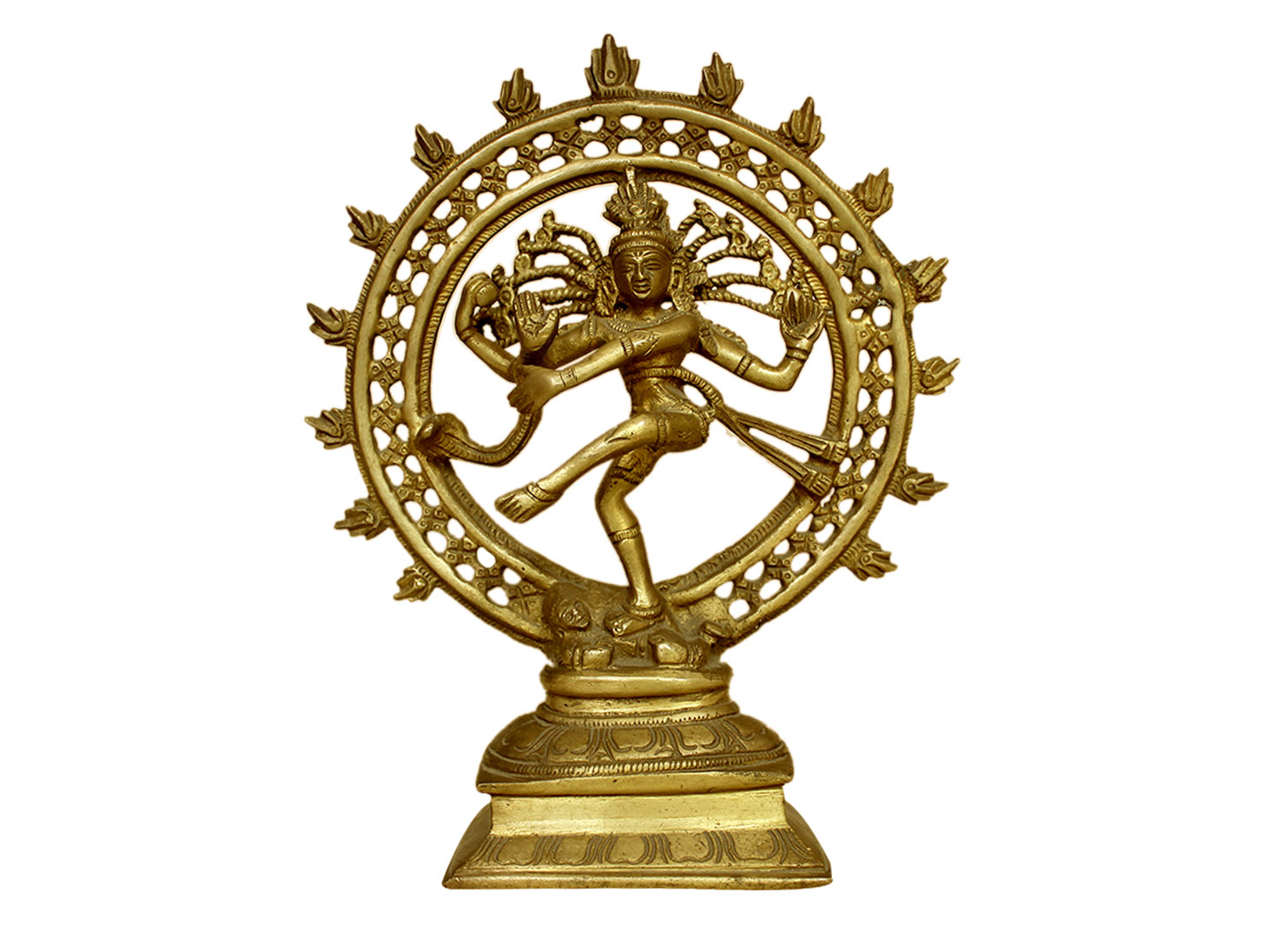Shiva as Lord of the Dance (“Nataraja”—nata meaning dance or performance, and
raja meaning king or lord)
The visual form of Nataraja
has Shiva with four arms dancing within a circle of flames (the
prabhamandala.) lifting his left leg and standing on a dwarf, Apasmara,
who symbolizes ignorance.
His upper right hand holds the drum
of creation (hourglass-shaped drum), beating the pulse of the universe and
also music for Shiva’s dance.
The drum, called udukkai in
Tamil, represents sound as the first element of an unfolding universe.
In his upper left hand, Nataraja
holds the fire of destruction, which according to Hindu mythology
is the instrument of annihilation at the end of each cycle of creation. These
two symbols, therefore, illustrate the intricate balance of the forces of
creation and destruction in the universe.
Front right hand is in the abhaya mudra (the
“fear-not” gesture, made by holding the palm outward with fingers pointing up.
The uplifted left leg signifies
revealing grace that liberates souls from bondage.
The lower left hand, meanwhile,
which points to the uplifted leg in assurance that Shiva’s foot is a refuge for
all true believers, and surrender to God is the path to liberation.
In classic Sanskrit treatises on
dance, this form, the most common representation of Nataraja, is called
the bhujamgatrasa (“trembling of the snake”).
Shiva’s third eye is open. The destruction he brings is not blind but serves a
purpose. And the open third eye, of the Ajna chakra of Wisdom symbolizes that
he can see what we cannot. The stars and planets are entangled in his hair as
ornaments which gives the universe itself.
The ring of fire around
the figure of Nataraja represents the manifest universe.
The flowing hair of Lord Shiva in
his dance symbolizes a rejection of society, showing Shiva as an ascetic.
 The figures of Ganges, crescent moon
and skull are also usually found in Nataraja sculptures, and are common symbols
of Lord Shiva.
The figures of Ganges, crescent moon
and skull are also usually found in Nataraja sculptures, and are common symbols
of Lord Shiva.
The snake around the waist
of Nataraja represents the ‘kundalini,’ or divine force found
in all beings.
The gestures of the dance represent
Shiva’s five activities (panchkritya):
- shrishti(creation)
- Sthiti (preservation)
- Samhara (destruction)
- Tirobhava (illusion), and
- Anugraha (grace or salvation).
IT is a dual statement of stillness and motion, the static
sculpture representing the intense activity of Lord Shiva. The stoic face of
Lord Shiva represents his composure and neutrality, unaffected and above all
forces.





















